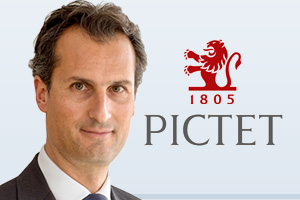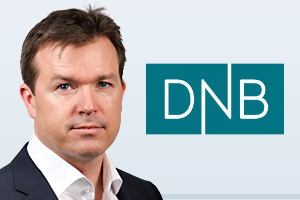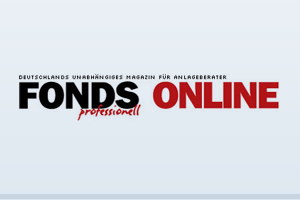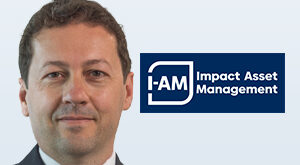
![]() SJB | Korschenbroich, 09.06.2021.
SJB | Korschenbroich, 09.06.2021.
Im April 2021 entwickelten sich Umwelttechnologie-Aktien schwächer als der breite Markt in Gestalt des MSCI World Index. Besonders Titel aus dem Bereich der Erneuerbaren Energien trugen zu der schwächeren Performance bei, da Windenergie-Unternehmen Probleme meldeten und sich auch Solarwerte unterdurchschnittlich entwickelten. In diesem herausfordernden Marktumfeld generierte der Pictet – Global Environmental Opportunities P EUR (WKN A1C3LN, ISIN LU0503631805) eine positive Wertentwicklung von +0,12 Prozent auf Monatsbasis. Pictet-FondsManager Luciano Diana analysiert für alle Investoren der FondsStrategie SJB Nachhaltig die neuesten Entwicklungen im Sektor der Umwelttechnologie. Der aktuelle Marktbericht thematisiert die FondsPerformance, die Veränderungen im Portfolio sowie den Ausblick für die Aktienmärkte des Environmental-Sektors.
Market review
Global equities enjoyed a strong performance in April to take their gains for the year-to-date past the 10 per cent mark. US stocks fared particularly well, with the S&P 500 posting gains for a third consecutive month as investors welcome solid economic data and better-than-expected corporate profits. With over 300 US blue chips having already reported first quarter numbers, 87 per cent beat consensus forecasts. UK stocks also fared well, up 4 per cent in sterling terms, as investors welcomed progress on the country’s coronavirus vaccination programme. More than 34 million people have now received at least one dose. Japan was the only major equity region to finish April in the red, hit by concerns that fresh restrictions to contain a surge of Covid-19 cases will crimp economic growth. Among equity sectors, the clear laggard was energy, failing to make any headway, despite a 7 per cent jump in oil prices. Materials, in contrast, took heart from an 8 per cent jump in global commodity prices. Iron ore prices rallied by more than 30 per cent while copper reached decade highs thanks to higher demand. On the environmental front, positive news flow continued, with the US declaring a 50-52% CO2 emissions cut by 2030 during the US-hosted global virtual climate summit while Japan and Canada announced steeper emissions reductions targets.
Performance analysis
The strategy underperformed the world market over the month of April. Renewable energy was the major detractor to performance. One of our wind names had issues with cable protection systems at some of its wind farms, resulting in warranty provisions impacting earnings. Our suppliers of technologies for solar farms continued the slide that started in February. Biden’s infrastructure plan should be favourable to these companies, but we will probably have to wait a few months for more details. In Energy Efficiency, an electric car company is still suffering from its higher valuation while semiconductor companies corrected after a strong year-to-date performance. In Dematerialized economy, there was a mixed picture. Certain names underperformed as they published results below expectations while other software names did well on both counts. The best segment was Waste Management & Recycling as these companies showed during their Q1 results that they have alreadystarted to benefit from the recovery. Containerboard companies are also doing very well in a tight and recovering market. Within Sustainable Agriculture and Forestry, our sustainable forestry name continued to march ahead in the context of record lumber prices.
Portfolio activity – overweightings & underweightings
We sold a building efficiency stock during the month while adding to an efficient data center name after very good results. We added to another building efficiency name as well as a company producing sustainable packing as the two companies have interesting valuations and benefit strongly from the current economic recovery. We increased our position in a telemedicine name after a reassuring call with the management showing the company is structurally well positioned, despite the market being worried about Amazon’s involvement in the telemedicine space. We continued to decrease our wind names while we also decreased our position in a work-from-home name after disappointing results.
Market outlook
The outlook for the environmental theme looks promising in 2021. The governments of Europe, China and now also the US – the world’s three major economic blocs – are finally all aligned on supporting technologies aimed at making their economies more efficient, less resource intensive and ultimately more sustainable. Even more importantly, corporates continue to invest in innovation and drive down the cost curves of many disruptive environmental technologies, despite the short-term Covid-related economic uncertainty. For example, the electrification and the digitization of entire sectors of the economy, such as transportation, manufacturing, buildings, construction etc., is poised to accelerate. This will benefit disruptive solution providers across the Renewable Energy, Energy Efficiency and Dematerialized Economy segments of our portfolio. In addition, companies that contribute to a cleaner environment are also likely to see robust demand, for example those in our Pollution Control segment. These companies reduce the negative health effects of pollution, help prevent future diseases and in general help rebalance the relationship between humans and nature.
Portfolio strategy
Our strategy remains firmly focused on investing in environmental solutions providers. We believe that exposure to environmental trends offers investors attractive risk-adjusted returns, regardless of the stage of the economic cycle. We favour solutions providers with wide economic moats, robust profitability, healthy balance sheets and business models that don’t rely on government subsidies. These companies are not only likely to weather a difficult economy, but also to perform well during the recovery phase. We favour exposure to defensive business models and avoid the more cyclical parts of the economy. Our bottom-up investment process results in a concentrated global portfolio with a growth and quality bias. Long-term, the trends of population growth and rising living standards are inescapable and so is the growing strain on natural resources. Awareness of environmental issues has grown tremendously in the last few years and is now deep-seated, top of mind for an entire generation of citizens, consumers and investors.
Pictet – Global Environmental Opportunities Management Team
Luciano Diana
Gabriel Micheli
Yi Du








